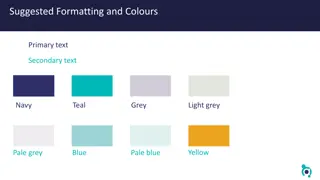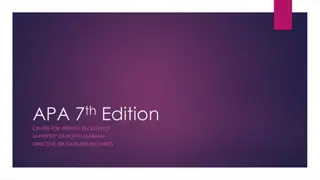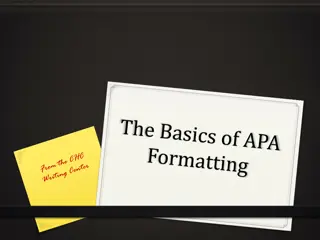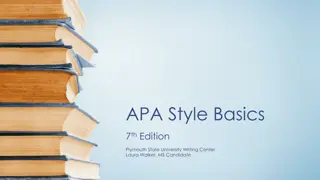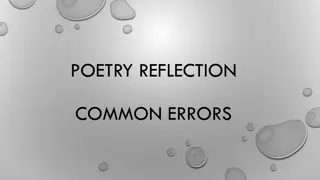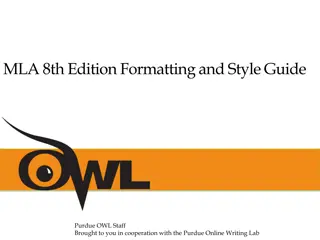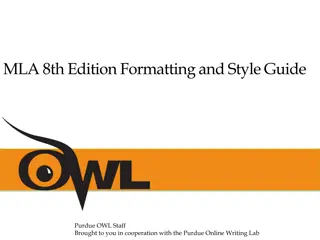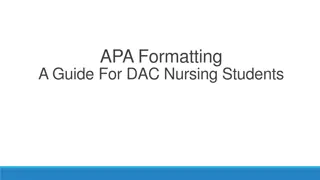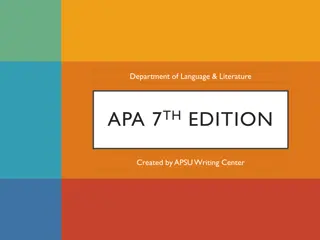Formatting Your BioResources Submission for Better Results
Detailed examples and guidelines for formatting your submission to BioResources 2016 are provided in the article template available online. The formatting covers basic text format, manuscript parts, section sequence, tables, figures, abstract, and manuscript body requirements for an organized and professional submission.
Download Presentation

Please find below an Image/Link to download the presentation.
The content on the website is provided AS IS for your information and personal use only. It may not be sold, licensed, or shared on other websites without obtaining consent from the author. Download presentation by click this link. If you encounter any issues during the download, it is possible that the publisher has removed the file from their server.
E N D
Presentation Transcript
Formatting your submission to BioResources 2016 Detailed formatting examples are available in the BioResources article template, on the Author Instructions page online http://www.bioresources.com
Basic Text Format Manuscript Parts in their correct styles Text style 16 point Arial bold (Title case) Manuscript Title 12 point Times New Roman Author List 10 point Arial Abstract 10 point Times New Roman italic Keywords 10 point Times New Roman italic Author contact information 10 point Times New Roman italic *Corresponding author 12 point Arial bold, all capital letters MAJOR HEADINGS: INTRODUCTION, EXPERIMENTAL, RESULTS AND DISCUSSION, CONCLUSIONS, ACKNOWLEDGEMENTS, REFERENCES 12 point Arial bold, capitalize important words Subheading: Materials, Methods, Others as Needed 12 point Times New Roman, italic, capitalize first word only Third-level headings 12 point Times New Roman Main body of text
Manuscript Section Sequence INTRODUCTION EXPERIMENTAL Materials Third level headings as needed Methods RESULTS AND DISCUSSION CONCLUSIONS 1. Given in a numbered list. ACKNOWLEDGEMENTS REFERENCES CITED
Text and labels to go with Tables and Figures Tables Title (12 point Arial, every word capitalized, left justified) Body (10 point Arial, centered in each column) Footnotes (10 point Arial, left justified) Figures Caption (10 point Arial, left justified; no period unless the caption ends with a complete sentence) Labels that denote specific figures in a plate (i.e., a, b, c, etc.) (12 point Arial Bold on/next to the figure) Axis labels for graphs (10 point Arial Bold)
Abstract and Manuscript Body Abstract The abstract should ideally contain about 150 words, with a maximum length of 200 words. Abbreviations and acronyms should be defined in the abstract. Manuscript body The margins of the manuscript body, except in the References Cited, are fully justified. All abbreviations and acronyms should be defined the first time they are used in the manuscript, even if also defined in the abstract. Sentences should not begin with abbreviations, acronyms, or numbers. Citations should be listed chronologically within parentheses in the text. For example: (Knope et al. 2002; Dwyer and Ludgate 2003; Haverford 2004) Only last names (surnames or family names) belong in parenthetical citations.
Experimental Section All instruments and equipment specifically listed in the Materials or Methods sections should be adequately described, to include the make, model, manufacturer, and manufacturer location (City, Country). All software descriptions should include name, version, software maker, and the location (City, Country) of the maker. The term significant should be used judiciously because this term typically implies statistical analysis. Unless statistics are performed, do not use when describing changes in specific data values. If there is statistical significance, please include the p-value or other relevant statistic.
Scientific Units Place a space between a value and an abbreviation or unit (e.g., 24 h) Time: s (second); min (minute); h (hour) Mass: g (gram); kg (kilogram); g (microgram) Volume: L (liter); mL (milliliter); L (microliter) Length: cm (centimeter); mm (millimeter); nm (nanometer) Temperature: C (centigrade); K (Kelvin) Pressure: kPa (kilopascal); atm (atmosphere) Frequency: Hz (hertz); MHz (megahertz) Power: W (watts); kW (kilowatts) Voltage: V (volts); kV (kilovolts) Current: A (amps); mA (milliamps) Resistance: (ohm) Molarity: M (moles per liter) Percent by weight: wt.%
Special Characters and Phrases Ensure that special characters are correct. Use (degree symbol; C) rather than o (superscript o; oC) Use (e.g., m) rather than u (e.g., um) Use rather than +/- Never use SimSun or other specifically symbolic fonts anywhere in the text, as it disturbs line spacing and causes other formatting troubles. Use the Insert Symbol function in Word to add symbols that will match the font you are using. This is mistake is particularly seen for characters such as ( ), x, and C may that be atypical and need to be replaced; they tend to appear somewhat skewed or italicized, and typically take up an extra space in the line. Latin phrases are italicized et al., etc., e.g., i.e., vs., versus, circa, via, in situ, in vitro
Equations Equations should be left justified with one indent. A number in parentheses follows the equation. On the next line, variables are defined. For example: The mass and volume of each wood sample was measured. The density (D) was calculated according to Eq. 1, D (g/cm3) = m / v where m is the mass (g) and v is the volume (cm3). (1) Note the space before and after mathematical expressions (e.g., +, -, /, )
Tables Tables should be generated with the table function in Microsoft Word. An example can be seen and copied from the BioResources article template. Tables should be consistent within the manuscript regarding format and presentation. Headings should stand alone. All units should be provided in parentheses. All abbreviations, symbols, statistics, or other shorthand in the tables should be defined in a table footnote. All tables should be specifically cited in the body of the manuscript.
Figures Graphs, photographs, micrographs, and schematics Figures should be consistent within the manuscript regarding format, font, and presentation. All your figures should match each other. Don t use a combination of different styles, for example from different graphics software. All figures should have a relatively high resolution (no blurred images). Figures in plates (more than 1 image, graph, or micrograph defined by one caption) should be clearly identified with a label (i.e., a, b, c; typically in the upper or lower left corner) and defined in the caption. Do not use such terms as upper, lower, right, left, or center to denote figures in the caption. Figure legends should be clear and concise, and should stand alone. Take care that symbols in legends show up appropriately in your final version. Abbreviations, symbols, statistics, etc. in the figures should be defined in the caption or the legend. All figures should be specifically cited in the body of the manuscript.
Graphs Authors are encouraged to use color graphs whenever possible, since this does not affect costs and typically increases ease of interpretation. Check each axis for consistent and complete axis labels. The label should stand alone, and all units should be provided in parentheses (not brackets). There must be a space between the label and the units, e.g., time (h) . Again, be careful that symbols in axis labels show up properly. For mean data, error bars (standard deviation or standard error of the mean) should be associated with each data point or bar. It is best not to label profiles within the graph, but rather use a legend to define each profile. Check labels, legends, etc. for spelling errors and appropriate formatting (i.e., italics, bold, underline, and special characters).
Micrographs A scale bar should be placed in the lower right corner of all micrographs to provide the relative size of the structure(s) of interest. The length of the micron bar may be defined in the figure caption, or the length placed above the bar. For light micrographs, use color whenever possible. Electron (scanning and transmission) micrographs typically have information such as micrograph number, date, magnification (and associated scale bar), and accelerating voltage on the bottom of the original image this information is to be cropped from the bottom of each plate image where it appears. See article template for more information and an example. The magnification provided on the image is often listed in the caption. This magnification is correct only if the original image (or negative) size has not been altered. Labels or arrows denoting structures within the micrograph should be defined in the legend.
Taxonomy Nomenclature Always italicize binomial nomenclature. If authors use the name/abbreviated name of the person who named the species, this is not italicized (e.g., H. italica (L.) Rothm.). The same applies if sp., spp., or subspp. abbreviations are used. The genus name is always capitalized, while species (and subspecies) is not. Full species name should be spelled out the first time it is used (Vulpes vulpes), then it can subsequently be shortened (V. vulpes). Make sure to define the Latin name at first when switching back and forth between the use of Latin and common names (...the red fox (Vulpes vulpes)...).
References Cited Full citations in the references section are listed in alphabetical order. Not numbered All authors of a work must be listed as well as the volume number, issue number (if there is one), page numbers, and DOI (for journal articles). For a citation with more than 10 authors, the first 10 authors are listed and the remaining denoted by et al. The author names in the References Cited are sometimes given incorrectly (rather than Surname, F. I.). Be careful with international names, and if in doubt, search the article online to verify. Either a complete or properly abbreviated journal name is acceptable. Within each manuscript, be consistent with the naming regime. If you choose to abbreviate journal names, use only their official abbreviations, available at: http://www.efm.leeds.ac.uk/~mark/ISIabbr/ (choose first letter of title after navigating to this page) Shortened names still are capitalized and have periods after each shortened word. For example: Cell Chem. Technol., Chem. Eng. J. Bioch. Eng., Holz Roh. Werkst. All sources must be listed in the References Cited, including national standards (i.e., ASTM, EN, CSA, GB/T, ISO, TAPPI, TS) and information from websites. Formatting of references is often inconsistent. Take time to ensure that the formatting is correct. Compare all references in the manuscript text with the References Cited for missing entries or inconsistent dates.
References Cited: Formatting Examples (1) Journal article Barc k, ., Ga par k, M., and Horej , P. (2014). Influence of thermal modification on nail withdrawal strength of spruce wood, BioResources 9(4), 5963-5975. DOI: 10.15376/biores.9.4.5963-5975 Test standard ISO 9087 (1998). Determination of nail and screw holding power under axial load application, International Organization for Standardization, Geneva, Switzerland. TAPPI T222 om-02 (2002). Acid-insoluble lignin in wood and pulp, TAPPI Press, Atlanta, GA. GB/T 2677.20 (1995). Fibrous material - Determination of holocellulose, Standardization Administration of China, Beijing, China.
References Cited: Formatting Examples (2) Book Wang, N. G., Yin, S.-C., Katrakov, I. B., Markin, V. I., Mikushina, I. V., and Khudenko, S. V. (2002). Methods of Investigation of Wood and Its Derivatives, Altai University Publisher, Barnaul, Russia. In a language other than English: Bla ej, A., ut , L., Ko k, M., Krko ka, P., and Golis, E. (1975). Ch mia Dreva [Chemistry of Wood], ALFA, Bratislava, Slovakia. Chapter in a book with editors James, A. M. (2001). Music in the 21stcentury, in: Textbook of Music Psychology and the Wooden Instrument Throughout History, Z. Catania (ed.), McGraw Hill, New York, NY, pp. 150-175. Master s Thesis or Ph.D. Dissertation Cook, J. R. (2013). Amine Functionalization of Bacterial Cellulose for Targeted Delivery Applications, Master s Thesis, University of Western Ontario, London, Canada.
References Cited: Formatting Examples (3) Website Montoya, I. (2015). Fencing, (http://www.keepusingthatword.com), Accessed 28 July 2015. Perkins, A. (2013). Trees and small town public health, The Pawnee Sun, (www.pawneesun.com/articles/perkins/tree_health.html), Accessed 31 Aug 2014. Abstract/poster presentation at a conference Maminski, M., Parzuchowski, P., Borysiuk, P., and Boruszewski, P. (2009). Hyperbranched macromolecules as modifiers of urea- formaldehyde resins, in: Proceedings of the Wood Adhesives 2009 Conference, Lake Tahoe, NV, pp. 424-426. (Here the page numbers refer to the abstract book)
References Cited: Formatting Examples (4) Technical Report Bell, E. R., Peck, E. C., and Krueger, N. T. (1954). Modulus of Elasticity of Wood Determined by Dynamic Methods (Report No. 1977), U.S. Department of Agriculture Forest Products Laboratory, Madison, WI. Sluiter, A., Hames, B., Ruiz, R., Scarlata, C., Sluiter, J., Templeton, D., and Crocker, D. (2008). Determination of Structural Carbohydrates and Lignin in Biomass (NREL/TP-510-42618), National Renewable Energy Laboratory, Golden, CO. Legislature European Commission (EC) Regulation 231/2012 (2012). Commission Regulation (EU) No 231/2012 of 9 March 2012 laying down specifications for food additives listed in Annexes II and III to Regulation (EC) No 1333/2008 of the European Parliament and of the Council, European Union, Brussels, Belgium.
References Cited: Formatting Examples (5) Patent Arnold, H. W., Dorough, G. L., and Latham, G. H. (1943). Coated cellulosic material, U. S. Patent No. 2334236. Lecture Smith, G. (2012). Lectures and course notes for WOOD 487, Department of Wood Science, University of British Columbia, Vancouver, Canada. Handbook/user guide SAS (2001). User Guide: Statistics (Release 8.02), SAS Institute, Cary, NC.


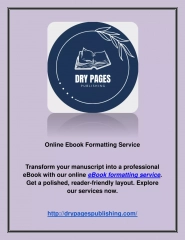


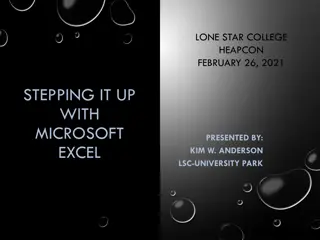



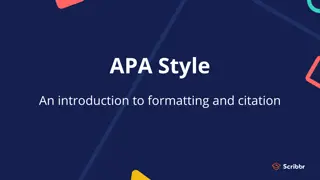
![ANC Women's League Oral Submission on Expropriation Bill [B23.2020]](/thumb/136076/anc-women-s-league-oral-submission-on-expropriation-bill-b23-2020.jpg)
